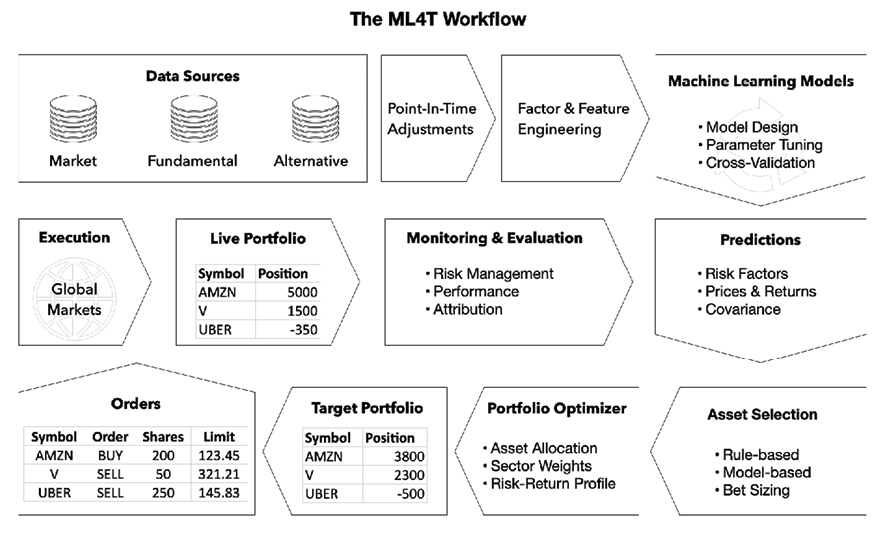Conclusions and Next Steps
Our goal for this book was to enable you to apply machine learning (ML) to a variety of data sources and extract signals that add value to a trading strategy. To this end, we took a more comprehensive view of the investment process, from idea generation to strategy evaluation, and introduced ML as an important element of this process in the form of the ML4T workflow.
While demonstrating the use of a broad range of ML algorithms, from the fundamental to the advanced, we saw how ML can add value at multiple steps in the process of designing, testing, and executing a strategy. For the most part, however, we focused on the core ML value proposition, which consists of the ability to extract actionable information from much larger amounts of data more systematically than human experts would ever be able to.
This value proposition has really gained currency with the explosion of digital data that made it both more promising and necessary...


